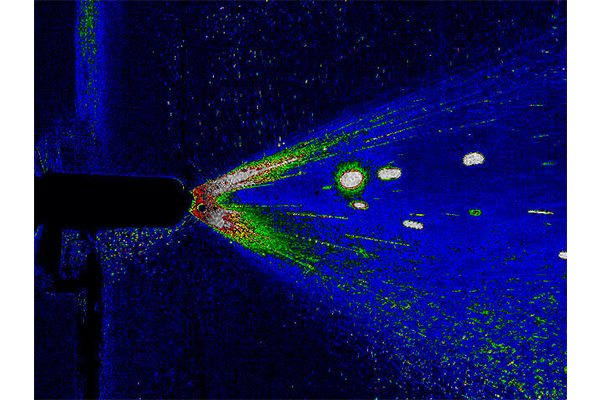A team of UT researchers is developing an inhalable therapy for COVID-19, but the research needs further funding to go to clinical trials.
Pharmacy professor Hugh Smyth said the treatment uses the drug niclosamide, which was originally used to treat intestinal worms. Ashlee Brunaugh, a pharmacy graduate student in Smyth’s lab, said niclosamide has been demonstrated to work well against COVID-19, but the existing oral tablet does not have enough of the drug to be effective. The team made an inhalable form that directly targets the lungs, where the coronavirus infection primarily occurs.
“We can deliver it by nasal spray, a device called the dry powder inhaler — which is a really small portable device — or a nebulizer, which is what doctors typically use to deliver the drug to patients on a ventilator,” Brunaugh said.
Brunaugh said the team chose the nasal spray and the dry powder inhaler for the treatment because the receptors for the virus that causes COVID-19 are found in both the nose and the lungs.
“If we can get the drug exactly where we want to get it, then we don't need as much (of the) drug entering your entire body where it may have other side effects,” said Zachary Warnken, a postdoctoral fellow of pharmacy. “We’re getting high doses exactly where the drug needs to be effective.”
Brunaugh said the team found the formulation to work well in cell cultures in vitro and when administered to mice with a coronavirus infection in vivo.
“The clinical situation right now is that most of these patients are already going to have the virus, and the infection is established when they go for treatment,” Brunaugh said. “So it makes more sense to do all of the in vitro and in vivo studies in established infections.”
The team collaborated with professor Sang Heui Seo at Chungnam National University in South Korea to use a biosafety level 3 lab for these experiments. Biology senior Hyojong Seo, who worked on the experiments, said the mice had a human gene that allowed them to be infected with coronaviruses. Brunaugh said among the mice treated with the new formulation, the ones infected with MERS-CoV, which causes Middle East respiratory syndrome, had a 43% survival rate, and the mice infected with SARS-CoV-2, which causes COVID-19, had a 30% survival rate.
“In terms of being able to scale (niclosamide), we can do that rather rapidly because, first of all, there's a lot of bulk drug around, and secondly, the drug has also been well studied from a safety point of view, and that makes it more amenable to quickly getting into clinical trials,” Smyth said.
Smyth said the team needs more funding to be able to run the safety studies with their specific formulation at a level the Food and Drug Administration would accept, which would be necessary to file an investigational new drug application.
“Once you start making drugs for human use in clinical trials, you need to manufacture on a much larger scale than what we are capable of doing, and you also need to make sure you're manufacturing it in a way that is very sterile and safe,” Brunaugh said. “So in that case, we really need a partner for industry to move us forward.”





















